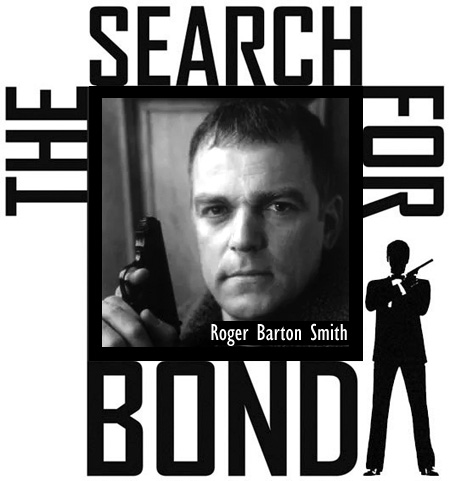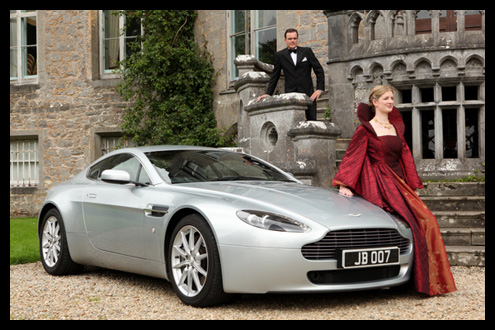 |
The Search For Bond The final part of an exclusive 3-part article |
|
|
||
|
|
||
|
Born in Sligo, the Irish town famous for spawning Westlife, Roger Barton Smith was a successful locksmith with his own business, making loads of cash, but working every hour God sent; he was burning himself out by his mid-30s. “I needed to get out. I had five bad accidents, including three car crashes, and every accident was getting bigger and bigger; it was like somebody was tapping me on the shoulder saying, you’re not listening. The final straw came when I was moving a safe out of a first floor window and it got stuck and so I pushed it and went out of the window with the safe and landed in the street below on a mobile crane.” Luckily the only place to land between the turret and the mobile cab was a flat bit of steel and that’s where Smith landed. Still, he was left unconscious, broke his back and lay in hospital for a week. “So I decided there and then that I had to change my life.” Leaving the business, Smith looked for a fresh start and a big challenge and found it in the burgeoning Irish film industry. By the mid 90s a lot of Hollywood companies had started filming in Ireland because of the tax breaks. “That’s it, I said, I’m going to become a movie actor. It was the biggest challenge I could find.” Smith started by getting extra work in movies, learning the ropes and how to perform in front of a camera, then in 1998 heard about an audition for a new television series called The Ambassador starring Pauline Collins (of Shirley Valentine fame). “Being on a movie set I learned that if you wanted to get the part you dressed for the part, so I went in dressed in my suit and got the role of the ambassador’s driver. And one day on the set the director’s assistant saw me in my suit and said, ‘You’d make a great Bond.’ I was stunned. ‘You must be joking. Pierce Brosnan is Bond.’ She shook her head, ‘Yeah, but they’re going to be looking for a new guy, he’s only got one movie left, and my dad was a cameraman on one of the Bond movies and I think you’d make a good Bond, you’ve got a totally different look, and you could pull it off.’” Smith didn’t take her seriously until a few weeks later when he donned his suit again to help a friend out in a local nightclub working on the door. “At this club they had pictures of all the Bond actors hanging on the wall, and one of the guys turned to me and said, ‘We’re going to put you up there because we’re calling you Mr. Bond.’ I said, ‘No!’ But then I thought; if these people can see it, maybe all I’ve got to do is plant the seed in the producer’s head. I’d been in the sales business myself, and I thought, all I’m really doing is selling myself, I’m the product. So the more I thought about it, the more excited I got. If I could just get the Bond producers to consider me for the role, I might actually be in with a chance.” Smith first had to prove that he had on-screen charisma. Instead of waiting for the perfect part to come along, he decided to create it himself. Along with a director friend, Smith came up with an idea for a short film called Black Velvet based around a tiny Irish village outwitting an American oil company. “I raised £35,000 from some of my rich friends and also put £20,000 of my own money in.” The film was shot over four days in Sligo, but Smith had wildly underestimated the costs of making a movie, even a short one. “It was eating money like a parking meter and as the costs spiralled my savings dwindled. I took out a bank loan of £10,000 but when that money ran out my dad came to me and said, ‘I can give you your inheritance money early to finish the film.’ I had to keep going. I had to have something to show for all that money and hard work.” When the final bills came in Smith had spent £120,000, but he had his own movie to show the Bond producers. “It’s the world’s most expensive business card, I joked.” Black Velvet premiered at the Galway film festival in July 2002 but never found any commercial success. Smith, however, was not about to give up on his dream to become 007 and sent his CV in September to EON. A month later he received a non-committal response. Remembering how he’d won the role in The Ambassador TV series by dressing for the part, Smith knew that’s what he had to do now. “I had to actually become James Bond. I went out and bought every Bond movie and watched them all and learnt his mannerisms, his poses and his lines. I bought books on Bond and absorbed every fact and figure.” The next step was even more ambitious, hiring a professional photographer and paying for a three day trip to Austria for an elaborate photo-shoot. “I called this ski instructor I knew and said, ‘I’m coming over with a photographer, I need a blonde and a brunette, BMW sports car, a snow mobile and some prop guns,’ and he said, ‘What!’ I also hired another ski instructor to teach me extreme ski jumps and stunts and mocked up an action sequence scenario with armed villains closing in on us. We took something like 1800 photographs in Austria and chose the best six to send to EON.” Pretty soon the local press picked up on Smith’s quest to become 007. “On the plane over to Austria I said to this photographer, ‘You must have done some strange jobs in your time.’ He said. ‘This is the maddest. You’re bringing me to Austria to do a photo-shoot to pose as Bond, its nuts. In fact, this is so mad there’s a story in this.’ So when he got back he rang a journalist and then I got a call from this newspaper guy saying, ‘I’ve got to come and see you.’ And the whole thing just took off and grew and grew.” In the end Smith found himself in the Irish national newspapers, interviewed on Irish radio, in tabloids like The Sun and The Star and also magazines where the story was then syndicated round the world. “At first people took the piss, but when they saw how serious I was and checked out the pictures on my website, the laughing stopped. ‘You might actually be able to do this,’ I was told.” Right from the very beginning Smith was never less than realistic about his chances, that it was really only a one in a million shot, but that it was wise in any case to formulate a strategy. He remembered a story about a friend’s father whose company was holding interviews for a job vacancy and 20 people showed up. By the time of the eighth candidate they’d more or less picked the person for the job, until a note came under the door that read, ‘don’t give the job away until you’ve talked to me.’ And this intrigued them, ‘who is this guy’, they asked. And it was the last person on the list, and he got the job. “So I took that concept and I got a card with a picture of Sean Connery and I wrote across the top – ‘don’t give the job away until you’ve talked to me’ and I sent it to Barbara Broccoli. I’d nothing to lose. I also wrote – ‘I hear that you haven’t chosen anybody yet, Connery was virtually unknown, why not go back to an unknown, you can mould me any way you wish.’” |
||

